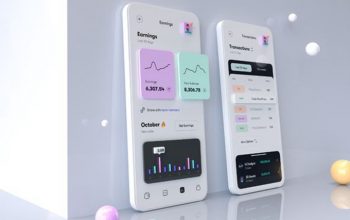In January 2020, Google made the primary privacy-forward transfer in asserting the trade’s race in direction of a cookieless future.
Table of Content
The phasing out of third-party cookies in Chrome (now deferred to 2023) was compounded by Apple’s rolling out of their App Monitoring Transparency coverage, which requires all iOS apps to ask customers for permission to trace their information. Since then Google introduced the deliberate deprecation of GAID by 2024 as a part of the Android Privateness Sandbox.
The implications for focusing on, measurement, and attribution have been vital for Google App Campaigns. On this article, we’ll discover the influence of ATT, why it is best to use an App Attribution Companion, Google’s denomination for the more-commonly used MMP time period, and how one can implement an MMP to higher measure your app campaigns right now.
The seismic influence of ATT
As talked about beforehand, Apple’s ATT coverage requires builders to ask customers to opt-in for information monitoring. In consequence, Google informed advertisers to count on three main adjustments:
First, Google knowledgeable advertisers to count on fluctuations in marketing campaign quantity, notably a lower in attain.
Second, Google steered builders implement Apple’s new framework to confirm installs from advert networks aka the SKAdnetwork API. Additional, Google steered advertisers additionally make the most of Firebase, which registers apps for SKAdNetwork attribution and “focuses on measuring first open conversions for consented customers.”
Lastly, Google expanded using modeled conversions, which makes use of their proprietary information to estimate conversions that Google is unable to measure and determine immediately. Extra on this later.
So how do you measure app campaigns right now?
On iOS, transferring away from IDFA compelled Google to shift to extra “data-driven” predictive modeling. To make issues extra sophisticated for advertisers, beginning with iOS14, Google didn’t present an opt-in immediate for customers of their owned and operated apps like YouTube and Gmail, leaving no room for user-level attribution.
As talked about beforehand, Google rolled out modeled conversions to protect marketing campaign reporting and optimizations. Google is a self-reporting community, however modeled conversions will not be claimed beneath this framework on account of privateness causes, which suggests modeled conversions can’t be independently verified by MMPs and attributed towards different media sources. Furthemore, Google doesn’t get information on conversions or installs from MMPs.
Within the context of iOS restrictions, Google additional promoted Google Analytics for Firebase for reporting and optimization inclusive of modeling alerts. Whereas Firebase is actually a instrument that helps app builders construct and develop apps, it’s primarily designed for Google.
In consequence, it’s best used alongside an MMP which might present a much more complete image of attribution throughout channels past Google (Firebase doesn’t have integrations with most of the highest networks, making attribution of installs, and consequently of in-apps, through Firebase unattainable).
Lastly, the vast majority of the Android ecosystem stays open to deterministic attribution with system IDs accessible the place consented, which implies that MMP attribution retains its full scope on the platform (as talked about, GAID deprecation is barely anticipated in 2024, and Google has dedicated to working with app builders on discovering appropriate options beforehand).
How are modeled conversions measured?
Google explains how they calculate modeled conversions when there aren’t any distinctive identifiers to measure advert interactions within the following steps:
- Advert interactions are separated by whether or not or not they are often linked to an advert with a conversion or not.
- Google measures the conversion charges of equally behaving customers primarily based on elements equivalent to time of day, system kind, and working system.
- Google applies a machine studying mannequin that predicts the chance of conversions for all customers that interacted with the advert. The learnings are utilized to every advertiser.
- The fashions are validated by Google’s calibration alerts together with historic conversion developments.
Whereas sure suppliers may report modeled conversions in combination in a devoted column, the proprietary modeling nature of this framework implies that no third celebration validation of modeled conversion could be carried out for the aim of attribution.
As such, any reporting inclusive of modeled conversions should be interpreted within the context of Google promoting solely.
Why measure Google with an MMP?
Google Advertisements reporting is inherently solely capable of see and report Google conversions, which can have touchpoints from advertisements working on a number of advert platforms that contribute to the funnel.
An MMP will carry out as a supply of fact, delivering unbiased attribution by deduplicating conversions throughout networks. Even within the case of inherently partial attribution information on iOS (on account of Google not prompting customers of opt-in, for example), such attribution alerts can be utilized as a baseline to mannequin total efficiency throughout channels.
Promoting on no less than two totally different platforms is sufficient of a justification to make use of an MMP. Nevertheless, even when an advertiser runs campaigns solely on Google, an MMP can present essential marketing campaign insights equivalent to viewers administration, incrementality, fraud detection, and consumer engagement.
With their connections to 1000’s of media companions, MMPs can show the true worth of a complete program.
Briefly, MMPs are one of the best ways to precisely measure Google Advertisements when a number of networks and media sources are in use.
The way to choose the best MMP for you
There are three key elements you must search for in an MMP with a view to achieve success when promoting on Google.
First, an MMP should be privacy-forward, and wishes to make sure that your integration is future-proof by having proactive privateness measures in place.
MMPs supply enhanced performancepast attribution, together with value evaluation, viewers segmentation, deep linking, fraud detection, and predictive analytics.
Lastly, it’s important to make sure your MMP is unbiased and unbiased of the enterprise pursuits of any particular advert community.
How does MMP measurement complement Google measurement choices?
Advertisers can use Google’s measurement options like Firebase. There is no such thing as a battle in utilizing each Firebase along with an MMP, and it might probably probably be useful for Google Advertisements marketing campaign optimization on account of distinctive Firebase performance round sign assortment for bidding and viewers constructing.
Nevertheless, there will probably be inherent reporting discrepancies between MMP and Google reporting, on account of a number of elements equivalent to multi-touch attribution and measurement restrictions stemming from Google choices round iOS14, in addition to modeled conversions not being claimed by Google.
These discrepancies are a characteristic, not a bug, and the mixture of native Google performance with MMP attribution might help type essentially the most correct image of efficiency for advertisers.
How do I migrate my attribution enterprise to an MMP?
MMPs are all built-in with Google, which makes it extremely simple to arrange. Listed below are the three key steps to the method:
- Builders generate a Google Advertisements Hyperlink ID
- Join Google Advertisements on AppsFlyer
- Advertisers map desired customary or customized Google occasions to MMP occasions
- Occasion information is recorded and despatched to the MMP for attribution and optimization. As soon as arrange, you may map occasions and get attribution information instantly for all energetic campaigns.



